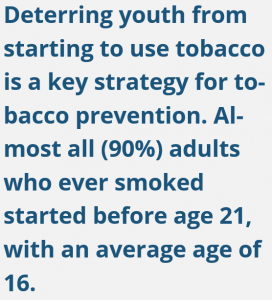Executive Summary
 The 2023 Wyoming Adult Tobacco Survey (ATS) provides insights into Wyoming adults’ use and attitudes regarding commercial tobacco and nicotine products. The survey, conducted by the Wyoming Survey & Analysis Center (WYSAC), tracks progress toward commercial tobacco and nicotine prevention goals.
The 2023 Wyoming Adult Tobacco Survey (ATS) provides insights into Wyoming adults’ use and attitudes regarding commercial tobacco and nicotine products. The survey, conducted by the Wyoming Survey & Analysis Center (WYSAC), tracks progress toward commercial tobacco and nicotine prevention goals.
ENDS (Electronic Nicotine Delivery Systems), cigarettes, and smokeless tobacco are the most commonly used products in Wyoming.
Key Findings
- ENDS:
- Most adults (70%) have never tried ENDS, but current use has increased from 7% in 2015 to 10% in 2023, nearing the cigarette smoking rate.
- Perceived harm of ENDS has increased, with 72% of adults saying it is very harmful.
- Cigarette Smoking:
- Current smoking rate is 12%, down from 21% in 2006.
- Nearly all adults (over 99%) acknowledge that smoking cigarettes is harmful.
- Secondhand Smoke:
- Most adults (88%) support smokefree indoor air policies for restaurants, and 83% for workplaces. Support for bars and casinos/clubs is over 50%.
- Most employed adults (93%) report working in smokefree indoor workplaces.
- About one in three adults report exposure to secondhand smoke in public places (34%).
- Quitting Efforts:
- Most adults who smoke want to quit (66%), and many have tried at some time in their life (87%).
- About 63% of current adult ENDS users have tried to quit.
- Emerging tobacco/nicotine products:
- The use of new and emerging products remains low among Wyoming adults with the exception of nicotine pouches. One in twenty adults reports using nicotine pouches (5%).
The ATS reveals a decline in cigarette smoking rates but a rise in ENDS use among Wyoming adults. Public awareness of the harms of smoking is high, and there is considerable support for smokefree policies. Targeted efforts are needed to prevent new tobacco or nicotine use, particularly among youth, and to continue to monitor new and emerging tobacco and nicotine product use.

